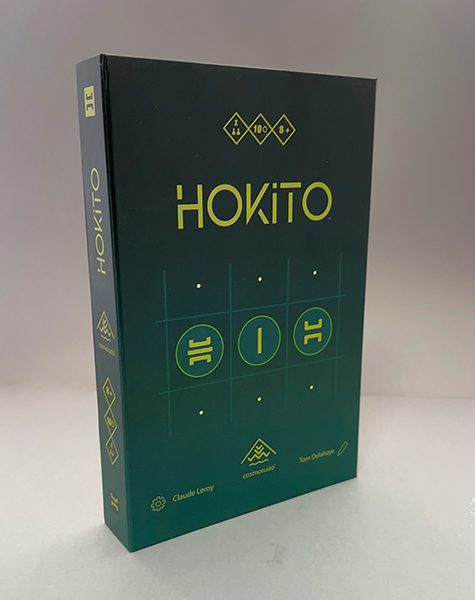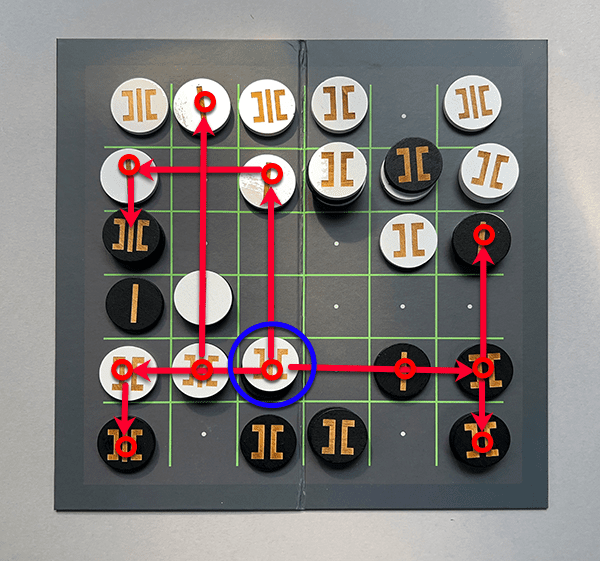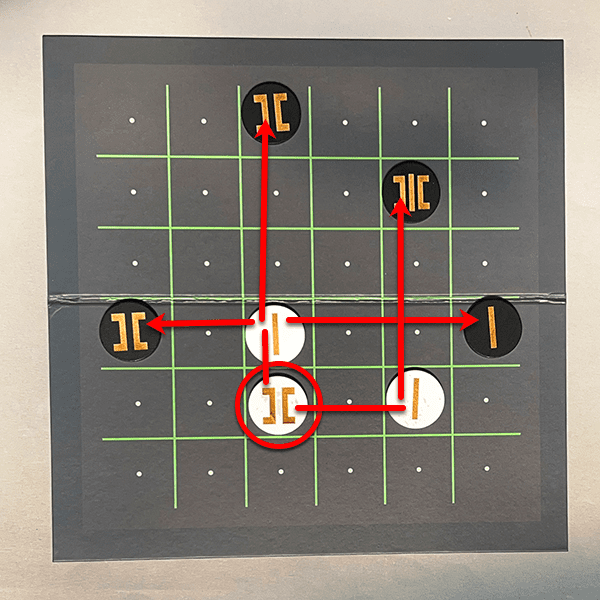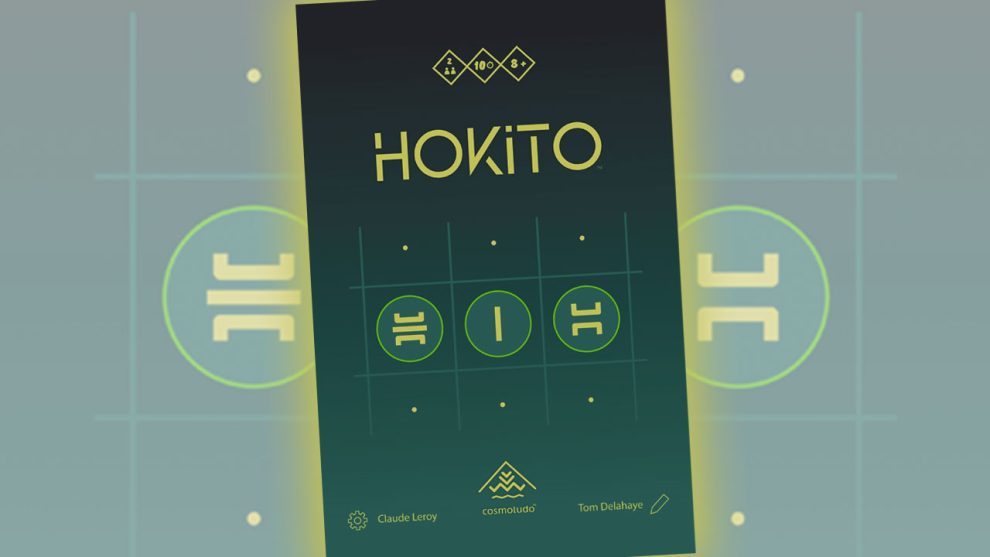Disclosure: Meeple Mountain received a free copy of this product in exchange for an honest, unbiased review. This review is not intended to be an endorsement.
It’s a 6 x 6 board, and each player has 18 pieces, either in White or Black. Players move to capture their opponent’s pieces, looking to score the most points by the end of the game.
If Hokito, designed by Claude Leroy and with art by Tom Delahaye, sounds like an Abstract Strategy game, that’s because it is.
Mind you, I love Abstracts. I was interested in playing Hokito even before I learned there were numbers on the top of each piece that regulated movement. That elicited a raised eyebrow of even greater interest.

Let’s get Hokito to the table, shall we?
Set Up
Unfold the board and set it between the two players.
Choose a way to determine who plays as White and who plays as Black. Give each player the 18 pieces of their color.
Players then randomly place all their pieces in the three rows of the board closest to them.

And now you’re ready to play.
Playing Hokito
Hokito is a game of capturing pieces. On a turn, you will move pieces of your color atop other pieces, most often those of your opponent’s color.
There are, however, several rules regarding movement:
Pieces only move orthogonally. Diagonal moves are illegal.
Single pieces can only move atop other single pieces; stacks can only move atop other stacks.
When moving a stack, you move the entire stack.
How far you can move a piece or a stack is based on the number on the topmost piece being moved. Pieces with a I on the top can only move one space; pieces with a II must move two spaces; pieces with a III on the top must move three spaces.
When determining how far you can move, you only count those spaces with pieces on them. Empty spots are not counted. As well, movement doesn’t have to be in a single direction, with a II or a III. For example, you can move one space and then change direction and move another space.
For example:

and

The game ends when the first player cannot make a legal move.
You’ll score by counting the number of pieces in each remaining stack and multiplying the total by the number of the piece on top of the stack. Therefore, a stack of 5 pieces with a II piece on top would score 10 points (5×2). A stack of 12 pieces with a I on top would score 12 points. (10×1)
Thoughts
As an abstract strategy game, Hokito ticks all the boxes for me. It’s an easy game to teach and easy to start playing. And, after the first few moves, you’ll slow down as the strategies of the movement options and scoring strategy start to make themselves felt. From there on, every move presents its own list of interesting choices to be made.
Games take about 10 minutes to play, making it easy to set up and play several times in a row. It’s been a hit with everyone I’ve played it with.
One point tactic worth mentioning: the early temptation is to focus on the first stack, trying to throw all your resources at claiming that ever-growing stack and its promise of lots of points. This, I have found, is not a wise plan of action. Doing so typically means a very lopsided final score. While this can be a satisfying way to win the game, it’s a frustrating way to lose and might put people off from wanting to play it again.
Hokito is one of several abstract strategy games by Cosmoludo. The packaging is slightly oversized for the components, but the box opens like a book, with a magnetic flap that keeps the box closed. It’s a great design, one that also looks good on my game shelf.
If you like abstracts, Hokito is one to be on the lookout for. (It’s currently available in the BoardGameGeek store.) I’ll be playing my copy for some time to come, as well as looking forward to playing some of the other Cosmoludo games.











Add Comment